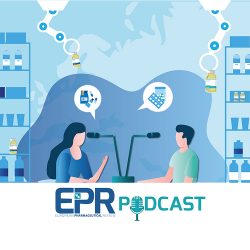European Pharmaceutical Review podcast

EPR Podcast Episode 15 – Modernising microbiology – Sophie Bailes and Miriam Guest, AstraZeneca

As Pharma 4.0 becomes a reality, a diverse array of technologies have emerged to enhance industrial processes, from the internet of things to artificial intelligence, machine learning and virtual reality. In this episode AstraZeneca’s Sophie Bailes, Associate Director for Digital Transformation and Miriam Guest, Principal Microbiologist, Pharmaceutical Technology & Development, share how these innovations are changing the the microbiology lab and aseptic manufacturing practices for the future.
What are the most significant changes in the microbiology lab?
Virtual and augmented reality
Miriam explains how virtual and augmented reality have emerged as key training tools within AstraZeneca; the power of the virtual reality platform they have applied for their microbiology and sterile manufacturing personnel is that it allows operators to see what they typically cannot: “As an example, air flows are really critical for aseptic processing and microbiology testing. But you cannot see air. Some of us will have been fortunate enough to see smoke visualisation, which we need to do to demonstrate our air flows are good and sound in aseptic processing, but not many people will have been involved in those.

Miriam Guest, Principal Microbiologist, Pharmaceutical Technology & Development
“The virtual reality platform allows you to see the air. It allows you to force the failures… If you intercept the air with your hand, it will show what that could mean for an air flow pattern… To be able to start your training in this virtual platform allows you to see where those critical mistakes could compromise your testing, or in the case of aseptic processing, where it could compromise your aseptic process.”
Sophie adds: “Augmented reality, as well, has started to come in. That is where you can be more aware of your surroundings. You just have a Perspex screen in front of your face where you can actually then not only see different instructions for certain tests, but it means you can actually also automatically link into things like Teams and then talk to people across our global network. This is really useful especially when we have very complex experiments or very complex bits of kit that you may need specialist support with. Actually, the person on the other end of the line can even draw onto the view that you have in front of you. Which is quite odd the first time it happens, but it’s just so useful to then transfer that information.”
Cobots and robots
Personnel will likely always be one of the key points of weakness in any contamination control strategy – and thus minimising the number of people in a sterile environment can be beneficial to control. “One of the things that we use in different areas of pharmaceutical development are cobots and robots actually can replace some of those activities,” says Sophie.

Sophie Bailes, Associate Director for Digital Transformation
“Absolutely. We are seeing people using cobots to automate activities that are routine, so your environmental monitoring, and switching out plates… having those processes done by a cobot or a robot or an automated way, it standardises how they are done. It reduces the subjectivity and the slight nuances of change that you can get from people to people. A cobot knows when it has made a mistake, whereas a person does not always know they have made a mistake… Those advantages are really powerful,” adds Miriam.
Sophie also notes how the use of cobots and automation supports data collection and data integrity: “If we think about the way a cobot would collect data, it would be consistent every time. It removes a lot of the extra data governance that we have to put around those places.”
“One area where we have successfully applied automation is our endotoxin testing. When we were looking at how the network were doing in endotoxin testing, we had one site that was already automated. The data was so powerful about their invalid sample rate compared to the sites that had the people doing the test setup. Our worst case site, they were getting up to 20 percent of runs being invalidated, whereas the site that were automating, it was less than two percent. That is really powerful, because an invalid test is going to cause you problems because you have got to repeat it. If you can reduce how many invalid tests you get, you can save time, be more efficient, and focus your microbiologists on areas where they can really add value,” explains Miriam.
“That is one area of automation. Of course, we will see advances in automation in other tests such as sterility and bioburden testing as we move forward and cobots become more accessible.”
To find out about the application of artificial intelligence and machine learning, as well as how the role of personnel will evolve with the addition of technology, listen to the episode!
Please join the conversation and leave your thoughts in the comments – we love hearing your feedback – and look out for our next episode coming soon!
The post <em>EPR</em> Podcast Episode 15 – Modernising microbiology – Sophie Bailes and Miriam Guest, AstraZeneca appeared first on European Pharmaceutical Review.






 Visit Podcast Website
Visit Podcast Website RSS Podcast Feed
RSS Podcast Feed Subscribe
Subscribe
 Add to MyCast
Add to MyCast